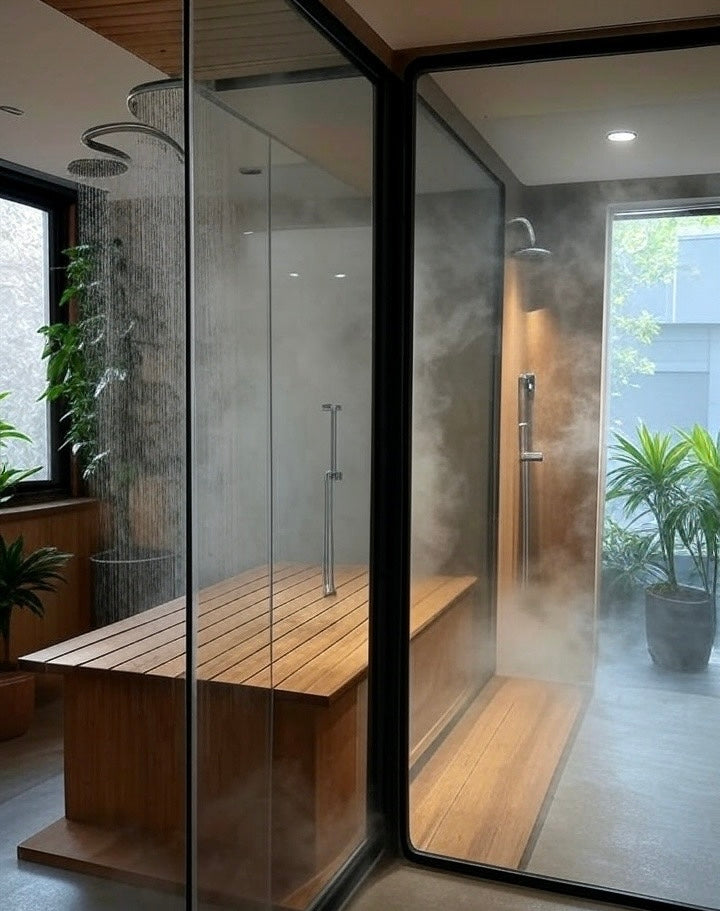Ever sat in an ice bath and wondered, "Is this freezing torture actually doing anything?" Short answer: Yes — but only sometimes! From Cold Plunge Tubs to your DIY Ice Bath Tub, science offers some cool truths. Curious what’s hype or helpful? Cold Plunge into the facts below!
The Science Behind the Chill: Unpacking the Evidence for Ice Bath Benefits

Ice baths, or cold water immersion, usually involve sitting in water around 10–15°C for 10 to 15 minutes. Many athletes use them after intense exercise to aid muscle recovery, ease inflammation, and bounce back quicker between sessions.
These tubs are often seen as a must-have in modern fitness routines. But do the claims really hold up under scientific scrutiny?
Let’s look at what research says about their benefits and limits.
Performance and Recovery: The Athletic Debate
Early Beliefs vs. Evolving Research
Cold therapy was once a simple go-to for sore muscles. Early studies backed its use, showing that cold water might reduce pain and swelling after tough workouts.
But more recent research brings a new perspective. While ice baths can offer short-term relief, their long-term effects—especially on training adaptation—are less certain.
We now know that they may not suit every recovery plan.
The Complex Role of Inflammation in Muscle Repair
Inflammation often gets a bad name, but it’s a natural part of how the body heals and builds strength. Suppressing it too often with cold exposure might interfere with these processes.
Cold Plunge Tubs may limit some of this useful inflammation if used too regularly. That’s something athletes aiming for strength gains should consider.
When Ice Might Help (Soreness Relief) and When It May Hinder (Strength Gains)
In the first 24–48 hours after a heavy session, an ice bath can genuinely reduce soreness. That can make it easier to train again sooner.
But if you're lifting to build muscle, daily cold plunges might do more harm than good. Overuse could blunt the body’s natural muscle-building response.
So, timing and frequency matter.
Shifting Paradigms: From RICE to PEACE and LOVE for Injury Recovery
Old advice like RICE (Rest, Ice, Compression, Elevation) is being replaced. Newer methods—like PEACE and LOVE—put more focus on movement, education, and patient engagement.
Ice still has a role, especially for acute injuries or swelling. But it’s no longer the go-to for every ache or strain.
Beyond Recovery: Exploring General Health and Well-being Claims
Impact on Mental Well-being (Stress, Mood, Sleep Quality)
Some users of Ice Bath Tubs report better sleep, sharper focus, and reduced stress. These benefits may stem from endorphin release and the refreshing shock of cold water.
Although studies on mental health impacts are still limited, early signs are promising. Cold exposure seems to have a positive effect on mood and alertness.
Immune Function and Metabolic Health: What the Studies Show
There’s growing interest in how Cold Plunges affect the immune system and metabolism. A few small studies suggest slight boosts in immune response and fat burning.
However, most findings are short-term and need more testing. Don’t expect ice baths to replace a healthy diet and active lifestyle just yet.
Understanding the "Cold Shock" Response and Physiological Adaptations
Your body reacts to cold suddenly—with fast breathing, a spike in heart rate, and adrenaline release. This is known as the cold shock response.
With regular practice, the body may adapt. These changes could help build mental resilience, but the long-term effects are still being explored.
Navigating the Plunge: Risks, Safety, and Best Practices
Who Should Exercise Caution?
Understanding Cold Shock and Hypothermia Risks
Jumping into icy water too quickly can lead to gasping, light-headedness, or even fainting. Longer exposure increases the risk of hypothermia, especially if the temperature drops below 10°C.
Always be aware of how your body responds in those first moments.
Considerations for Pre-existing Conditions
People with heart conditions, poor circulation, or breathing issues should speak to a medical professional first. Cold exposure puts stress on the body and isn’t suitable for everyone.
When in doubt, it’s best to check before trying an ice bath or Cold Plunge Tub.
Practical Tips for a Safe and Effective Ice Bath
Optimal Temperature and Duration
Aim for a temperature between 10–15°C. Stay in for 10 to 15 minutes, maximum. Longer isn’t better—it just adds risk.
A thermometer helps keep things consistent and safe.
The Importance of Gradual Immersion
Don’t rush it. Start by dipping your feet and legs, then ease in slowly. This helps your body adjust to the cold and avoids shock.
Taking 30–60 seconds to enter fully is ideal.
Listening to Your Body
Mild shivering is normal, but tingling, numbness, or dizziness is a warning sign. If you feel unwell, get out right away and warm up.
Recovery should feel refreshing—not dangerous.
The Cold, Hard Truth: Is It Worth It?
Balancing Science and Personal Experience
Ice baths are backed by science, but only in specific cases. They can reduce muscle soreness and inflammation after exercise.
But they don’t offer performance superpowers. Used too often, they may actually work against strength gains.
It comes down to your goals and how your body responds.
The Future of Ice Bath Research
Researchers are now exploring ice bath use in mental health, immune function, and even ageing. As more findings come in, we’ll gain clearer guidance on when and how to plunge.
For now, enjoy the chill—but do so wisely.






